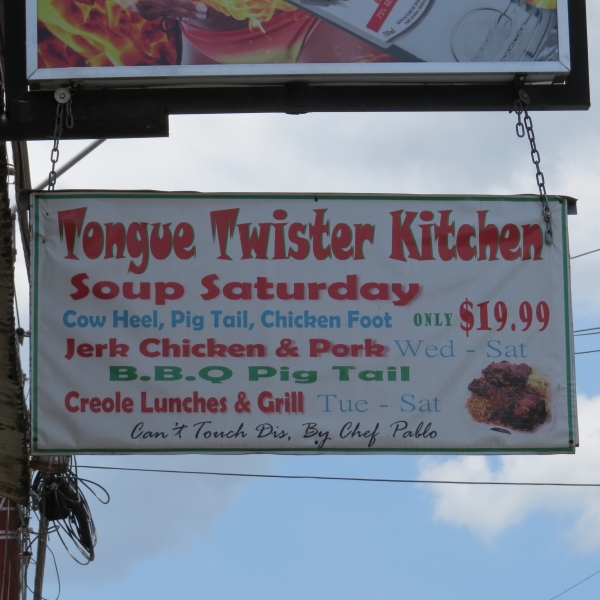Trini Food - Hot Stuff!
/Living in Trinidad for awhile, we've had the opportunity to sample some of the local food. It's a mix of Indian and Creole and African, with a Caribbean flair. They make use of locally grown veggies and fruits mixed with the spices they're use to. They like “HOT”. In fact, one of the world's hottest peppers, the Moruga Scorpion is grown here. Hot sauce is usually available and on the table in every restaurant.
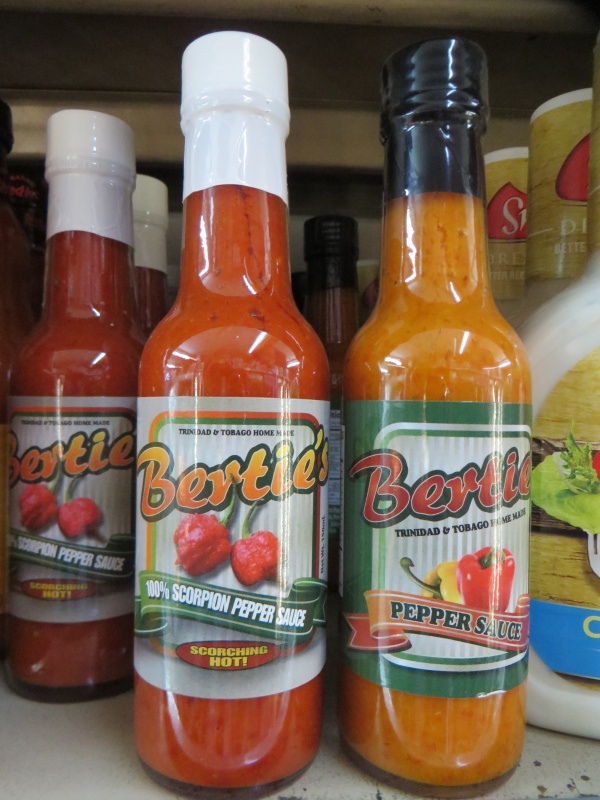
We've talked about roti before, but there are so many different foods here that we've never mentioned. Bake & Shark, for instance. First, you catch a shark, cut the meat into sandwich-size filets and deep fry it. Then you fry up some dough (aka bake) and make a sandwich. Add some lettuce and tomato and maybe some catsup or hot sauce and you've got bake & shark. Maracas Beach, on the north coast, is especially noted for this local favorite, but we saw signs advertising it throughout the island. David tried it and liked it … basically a fried fish sandwich with a bite.
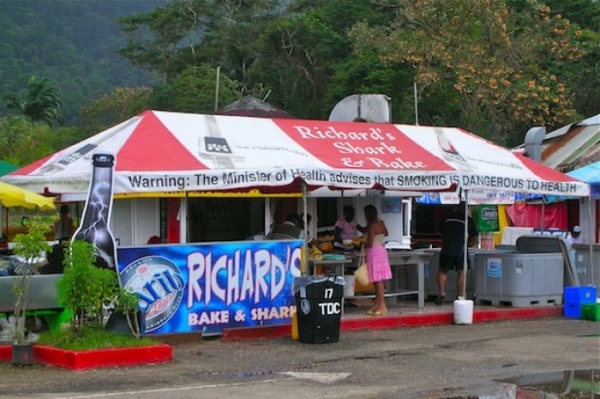
Doubles are offered daily right outside the Power Boats entrance gate. The local workers line up at little makeshift stands and the ladies dish up the doubles for breakfast and lunch. Doubles are a pretty common street food here. It's basically a flatbread sandwich filled with channa (curried chick peas) and some kind of topping like mango, tamarind or cucumbers and maybe some added hot sauce.
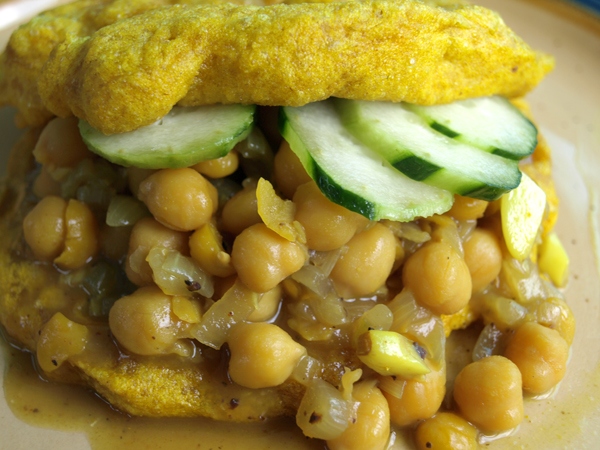
Legend has it that those who eat cascadura (aka cascadoo) will end up back in Trinidad. It's a freshwater fish covered with scales and does not look particularly appealing. It's usually served curried and we heard about it, but never got a chance to try it. I guess we're not coming back.
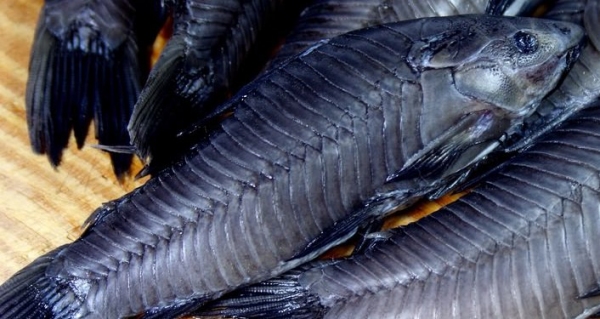
Fruit chows, comprised of local fruit in season like mango and pineapple, are common and sold as a snack food. The fruit is mixed with lime juice, garlic, cilantro, oil and peppers.
There's souse which sounds disgusting. Pig trotters or chicken claws (i.e. pig or chicken feet) and sometimes conch, are boiled and the meat (how much meat is there on a chicken foot?) is served cold in a briny sauce seasoned with lime, cukes, peppers and onions. We passed on this one, too.
The locals also hunt during season (and probably out of season) for agouti, iguana, possum (manicou), wild hogs (quenks) and armadillo (tatoo). We saw none of these on the our menus. Just as well.
At the market, I had to do a little translation. Ochro is okra, melongene is eggplant and zaboca is the local avocado. Papaya is pawpaw. Garbanzo beans are chickpeas or channa. Dasheen is taro and its leaves are used to make the African-Caribbean callaloo soup, which is quite good.
When we were at Toco Beach, we were offered sea moss (sea weed) … both dried and also as a drink. The fellow selling it claimed it was good for energy. We read that Trini men also claim it to be an aphrodisiac. If it is, it would certainly be more ecologically sound than rhino horn powder.
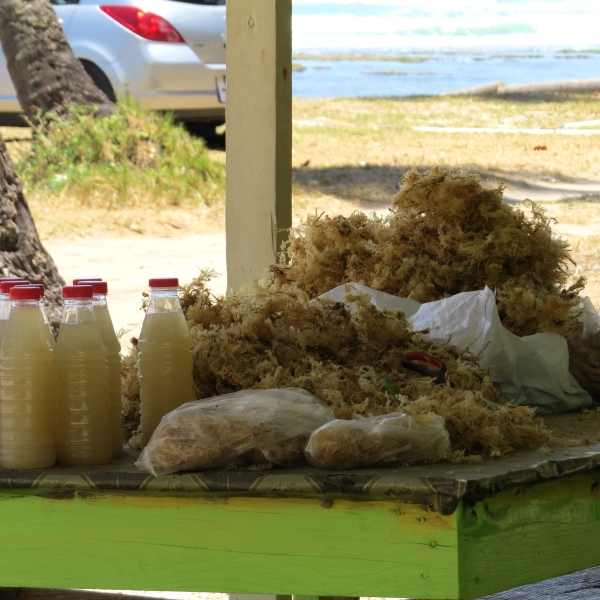
While we were driving through the countryside, we saw a small, hand-painted sign for “Sucker Bags for sale”. Turns out this is a frozen confection made from sweetened, condensed milk.
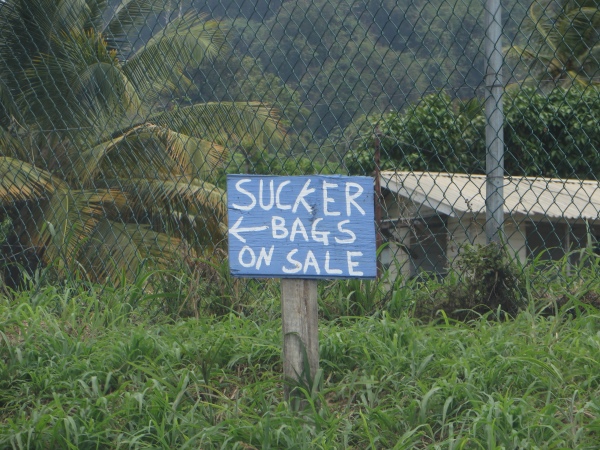
There's also coocoo (corn meal and ochre) and cowheel soup, pigtail and frypork and several dishes where goat is the main ingredient. There's probably dozens more dishes we've never tried or heard of. Eating in a foreign country is always interesting, but Trinidad has been an ongoing epicurean adventure.
